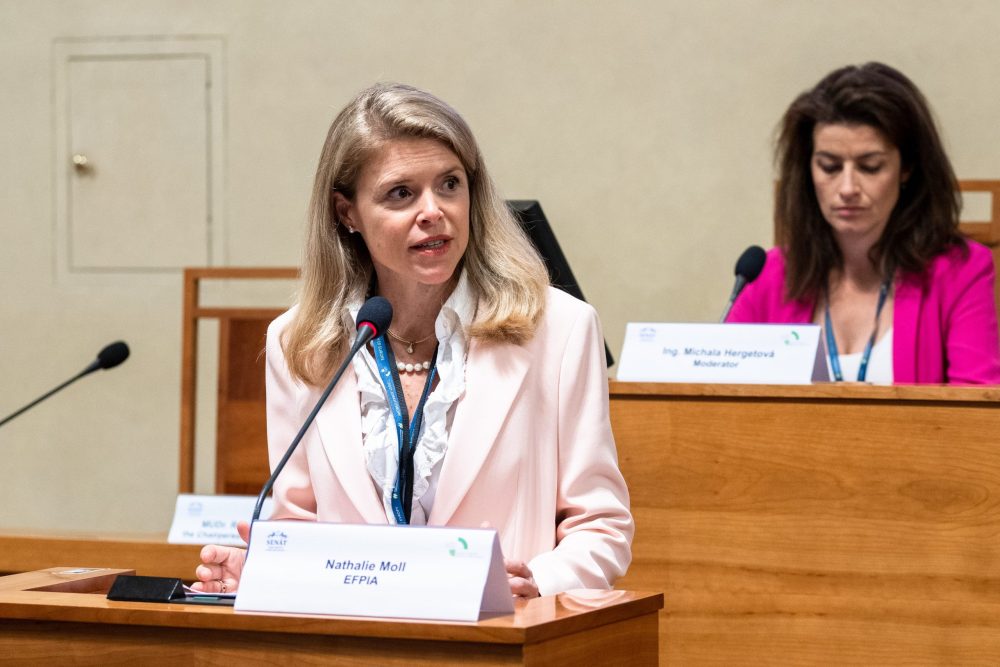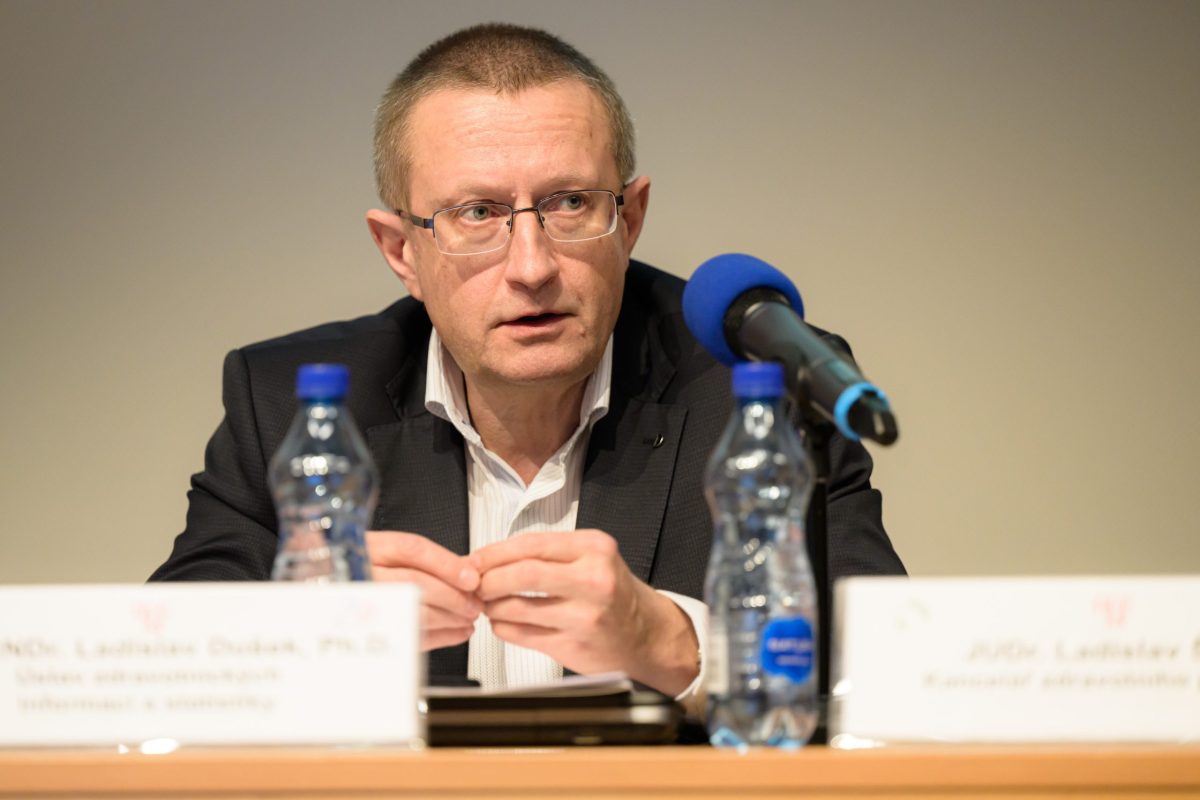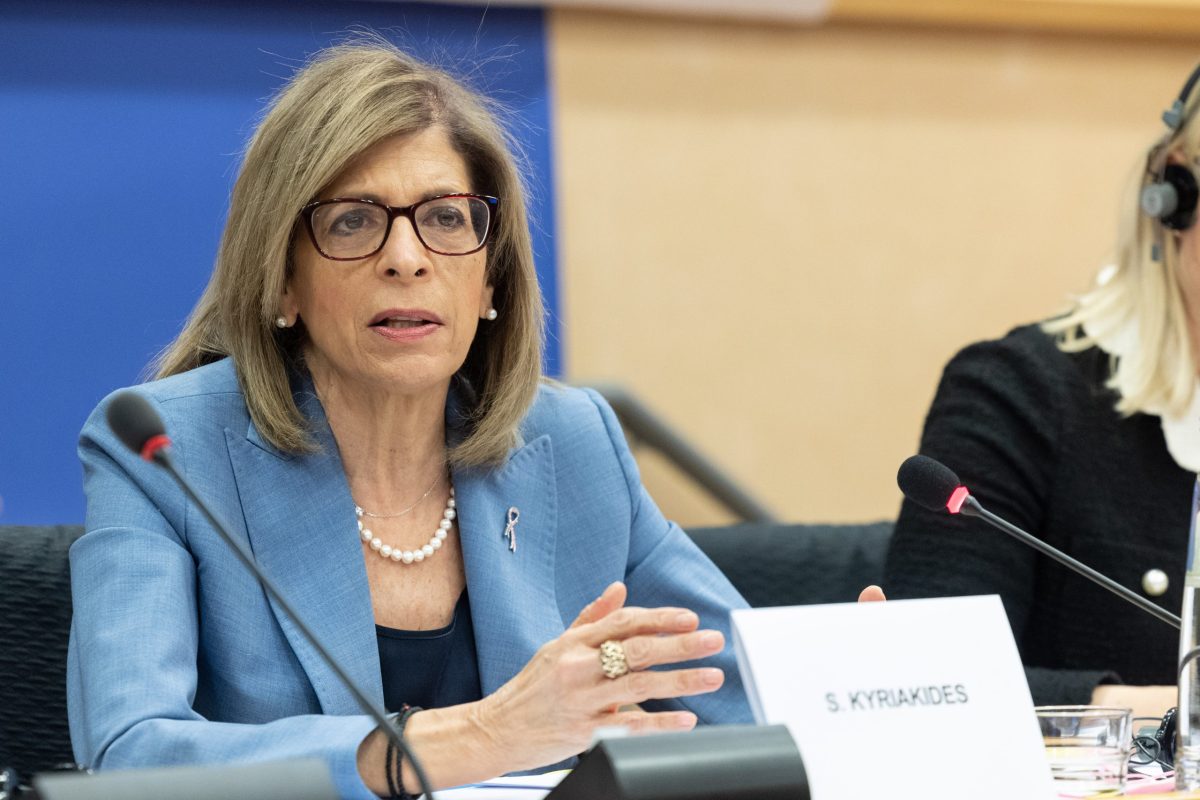After twenty years, the European Union is going to rewrite significantly its rules of its pharmaceutical market. It is generally agreed that revision is necessary. Yet, it remains open how to do it and secure that all patients get to their therapies as soon as possible and, at the same time, pharmaceutical companies do not leave Europe behind due to its strict rules. We have about 8.000 new products in the pipeline and we really want to have them approved and accessed in Europe and not just in other parts of the world, says Nathalie Moll, EFPIA (European Federation of Pharmaceutical Industries and Associations) Director General, in an interview with Zdravotnický deník.
We are meeting in Prague at the international conference on the Pharmaceutical Strategy for Europe and the upcoming revision of the EU pharmaceutical legislation. Could you explain from your point of view, why it is so important to talk about it at this moment?
Actually, it is a very exciting moment. It is the first time that Europe has a pharmaceutical strategy, it has never happened before. And it was finalised just during the covid pandemic which clearly showed how health is important, economically as well as for the future of Europe and the world. The combination of both, the covid-19 experience and the strategy, makes this time in history an incredible opportunity.
The pharma strategy aims to ensure that Europe has a globally competitive innovative pharmaceutical industry that provides patients with accessible medicines. These are its two main objectives and they are the same as we, the industry, have. The idea is to revise the legislative framework to bring it up to speed with scientific developments and make it very competitive and attractive for investments in innovation. And since we have about 8,000 new products in the pipeline, we really want to make sure that the legislative framework is ready to enable the approval and access of these products in Europe as well and not just in other parts of the world. Europe has already lost grounds in terms of innovation and competitiveness to other parts of the world and this revision is our opportunity to catch up again.
Why is it important to support the presence of innovative pharmaceutical industry in Europe?
This industry matters not only for the solutions it brings to the challenges patients face but also in economic and employment terms. The industry is an important investor in Europe, it invests 41.5 billion euros in research and development every year, supporting 840,000 jobs directly and 2.7 million jobs indirectly involved in the process of making new therapies. In terms of economic benefits, we contribute more than a hundred billion euros to the economy in Europe directly and 106 billion euros indirectly as well as being the biggest positive trade balance contributors compared to any other high-tech industry.
Having the innovation in Europe is crucial because once there is research and development in Europe, this fuels the innovation ecosystem of research centres, universities and clusters and of course leads to clinical trials where patients are able to access medicine faster when they are enrolled in them. Medical innovation will happen, the question is where it happens.
Almost half of the new treatments originate in the USA whereas in the European Union, it is 22 percent. Why is that and what can be done to change the ratio?
There are many reasons for it. Firstly, we cannot compare ourselves with one country. We are 27 countries constantly evolving. We have different legislative systems, we have products approved centrally that then need to be evaluated for their value in each country to become available to patients.
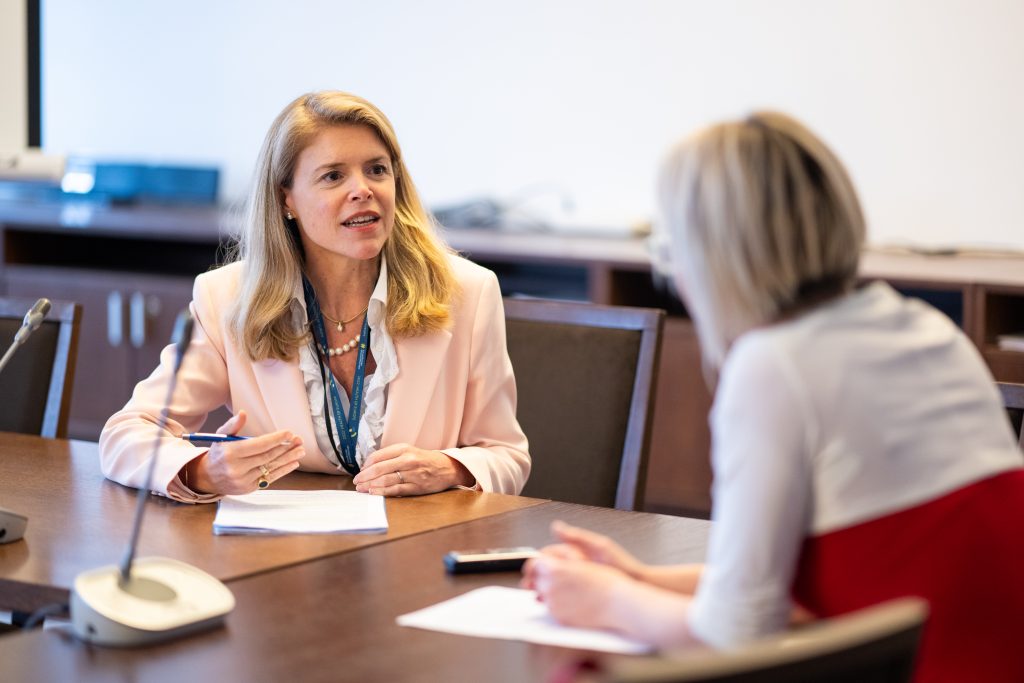
The total amount of venture capital available to invest is also 8 to 10 times less than in the US. When as a region you face these realities you need to excel at everything else to be as attractive as possible. You have to have the best regulatory framework in the world, the most efficient, the most forward-looking, the most easy-to-navigate. You have to have the most stable, attractive and predictable intellectual property framework. You have to make sure that all the other conditions reassure investors that this is the right place to invest in. And convince innovators that this is the place where they can transform their inventions into products and get adequate reward for their innovations.
We are not there yet today. We have a regulatory framework that needs to be updated on the one hand, and on the other we have a very strong and attractive incentives framework. And now, we have an opportunity to upgrade everything to the level that will make us hopefully even more performant and attractive than other regions. Such opportunities don’t come around that often. Either we seize it now or it will set us even further back as a region, for the next twenty years.
Mohlo by vás zajímat
In 2021, North America accounted for 49.1% of world prescription medicines sales compared with 23.4% for Europe. When it comes to sales of new medicines launched during the last five years, the gap between the two regions is even starker, with 64.4% of sales being made on the US market compared with 16.8% on the European market.
Now it is all a theoretical discussion only
Is there anything in the U.S. environment that could inspire us here in Europe?
They have already inspired us as regards the regulation on orphan drugs, for example. We have learned which areas can be incentivized and we have done well. Our regulation approved in 2000 allowed us to move from eight products to treat rare diseases then to more than 200 available now. The US are better at regulating combination products, through a single system. We are not there yet and that is something holding us back now and especially in the future. Although the new legislation on in vitro diagnostics and medical devices has just been approved, we very much hope that the upcoming review will make the pharma legislation also more effective and comparably competitive to other parts of the world in assessing combination products.
In the area of research and development, we have done well. We have national and regional research clusters and poles, EU horizon projects, national and EU public private partnerships, such as IMI and now the Innovative Health Initiatives. The opportunity lies in getting the next step right. As regards both its funding and the regulatory pathways which should be easy to get through, fast, efficient and innovation-proof.
The next step being…?
Clinical trials are extremely expensive. Generally, when SMEs have to go into clinical trials, they need to either collaborate with a bigger company or find some serious long-term funding. And in Europe, this continues to be a challenge. We need to look carefully at how to de-risk this investment.
The step after that is the access to the therapies for patients which also needs to be attractive for investors. They invested in a very risky R&D project that lasts generally 15 years before reaching the market and they need to know it will reach patients. The whole of the EU is discussing how we can do better. In the last three years, we, as the industry, have been looking at the obstacles which exist to improve access to innovation, given the significant disparities being observed across EU Member States in terms of availability of innovative medicines. We published evidence-based reports, identified ten obstacles which often relate more to the regulatory and pricing and reimbursement systems in the countries which then impact commercial decision-making of producers.
And yet, you have made your commitments.
Yes, because we looked at those ten obstacles and which ones we as an industry can and must address on our own. The first commitment is that we file pricing and reimbursement applications in all 27 EU Member States no later than two years after EU market authorisation. The second is that we will set up a European Access Portal to gather evidence on the root causes of delays for the products that are filed and on the root causes of unavailability for those products that are not filed. We are also asking for a structured dialogue where models such as Equity Based Tiered Pricing framework could be explored and ensure more uptake of novel pricing mechanisms and the adherence of Member States to the HTA scientific evaluations that they agreed will be done at EU rather than national level. There are many things we can do and if there is the intention of all the stakeholders to get it right, I think we can do get it right – together.
Looking at the recent W.A.I.T. Indicator Survey, the two-year commitment seems a bit unrealistic for some countries such as Romania or Bulgaria.
This goes hand in hand with the Access Portal. By tracking where products are, at which point in which country, we will be able to see what the obstacles are and, I would hope, address them. That is the difference. By giving this level of transparency, we should be able to pinpoint why a product has not reached patients in a country yet. The intention behind the commitment and the Portal is not just to file, but also to check the causes of delays and fix them. And slowly unblock what is blocked. Discussions until now have been rather theoretical and often resulted in unconstructive finger-pointing.
We are also aware that the commitment to file may have varying impact in countries since its impact will also depend on the capacity of countries to provide additional resources to review and decide on the number of pricing and reimbursement applications that is expected to significantly increase in some countries.
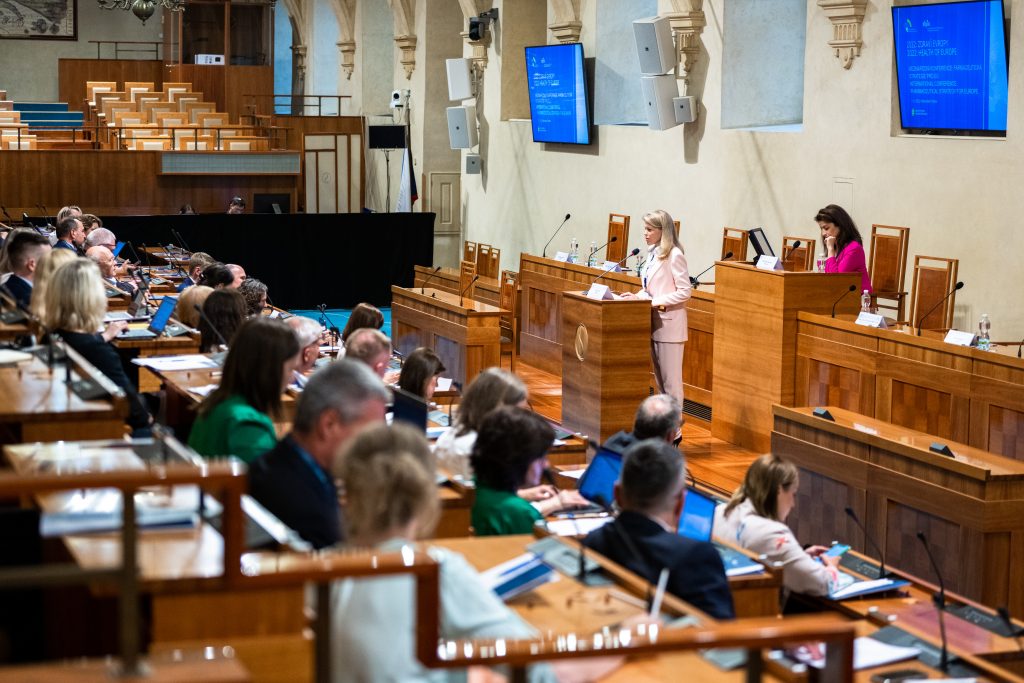
However, EFPIA does not cover all pharmaceutical companies in Europe. Will the results coming from the portal be relevant then?
Because EFPIA covers approximately half the new centrally approved molecules by EMA, we have reached out to others players such as the biotech associations and the generic association, smaller companies to test their interest in joining this effort. For them, it is quite a new concept and conversations are ongoing. We would also like to invite other stakeholders to the Appropriate Usage Governance Board of the Portal such patient groups and, why not, institutions? We really would like to have a multi-stakeholder board to increase its credibility, sustainability and usefulness.
It cannot work
Covid-19 has changed a lot as regards communication between regulators and the industry. Our deputy health minister Jakub Dvořáček says that now they talk about things they would never have thought of discussing before. Still, you keep complaining that the communication is not sufficient. So what is the situation?
Communication is open because the trust that was built during covid is still there. Yet, I have noticed, that the communication on individual elements of the pharma revision seems less fluid that with other pieces of legislation. Maybe because the task is so big.
The point is that it is so important not to miss this boat, which has already been sailing, of improving our regulatory framework and future-proofing it. Workshops and public consultations are a good first step and we really need to have structured and detailed conversations too. Industry has expertise and ideas to share, also from other parts of the world that will help ensure Europe has requirements in line with the rest of the world and does not lose further ground.
The second area where communication could be better is the access area, where most competence lies with Member States. You cannot address post-marketing authorisation challenges within the marketing authorisation process. Therefore, we have been calling for a forum of all relevant institutions and players to talk about access. We have revolutionary biotech treatments that we try to fit into existing healthcare systems built for chronic treatments. It cannot work. We need to work together to reshape the system so it is fit to welcome the biotech breakthroughs of today and tomorrow.
When such conversation happens here, in the Czech Republic, we always end up saying that we don´t have sufficient data.
Yes, but still, it is something to start with. You can start the discussion about how to get the data and where it can be found. Even knowing that you don´t have the data is better than not talking at all.
The first objective of the forum should provide stakeholders with the opportunity of a collective review and analysis of the evidence about trends underpinning the current policy debate about pricing and access.
Nevertheless, with the new bodies and consultation mechanisms arriving with regulations on Joint Clinical Assessment and HTA, the communication might get better.
Well, yes, it is very encouraging to see that they exist and they have a very clear remit. And Europe is very complicated. Today I heard from the Head of your Medicine Agency that the new HTA regulation actually means a need for more resources for the Agency. I would have never thought of that. But I would have never known if I had not been sitting here and listening to her. This is the value of sitting together, discussing problems, agreeing on what they are and talking about how they can be fixed. Yet, today we don´t even have an agreement on what the problems are. Then they cannot be fixed.
Currently, EFPIA is quite active in helping during the Ukraine crisis. You have also recently met with the Ukrainian health minister Viktor Liashko. Can you describe the aid that the industry provides?
In this horrific situation, it is important for me that we can do “something” that matters. From the very beginning, we were sharing information on our website on what the companies were doing in terms of donating medicines and money. To date, companies have donated over 23 million doses of medicines and more than 65 million euros in financial support to NGOs.
We recently met the Ukranian health minister and his Deputy. I was very impressed and moved by both of them, managing the crisis and, at the same time, looking into the future while their hospitals were being bombed. We discussed ways in which EFPIA and the industry could continue to help Ukraine and the Ukrainian people, be they in the country or displaced outside Ukraine.
As EFPIA, we coordinate the industry aid to the Ukraine. We receive lists from the ministry and other requests and coordinate these with our member companies. We also work with patient groups in the country and our local association. We have been fortunate enough to be able to hire a knowledgeable Ukrainian colleague who had to leave her country in March, to help us on our humanitarian efforts and are committed to doing everything we can do to help.
Helena Sedláčková
Photographs by: Martin Menšík

